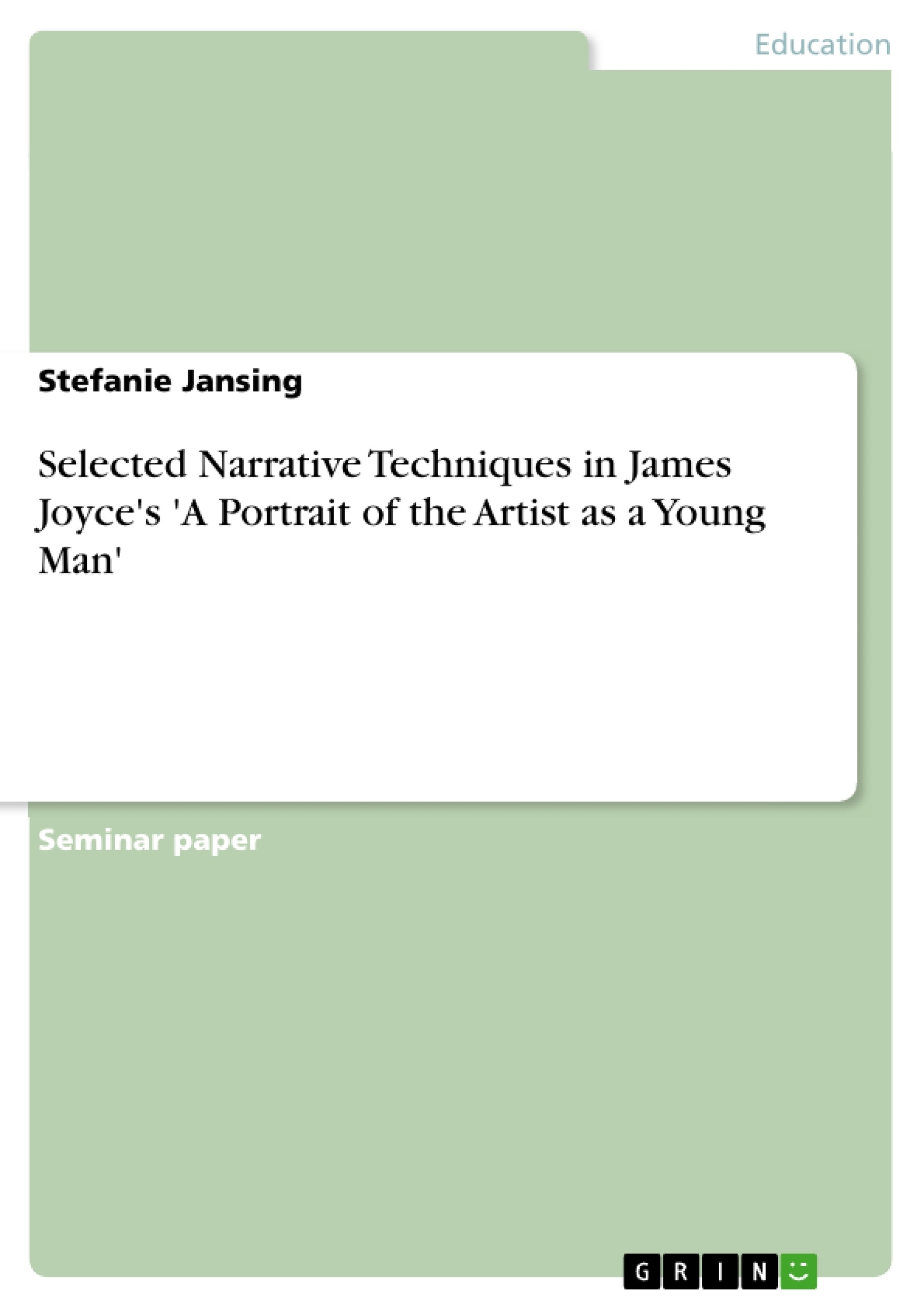In James Joyce’s novel "A Portrait of the Artist as a Young Man" a variety of narrative techniques is used. In this research paper I want to explore how the use of different narrative techniques correlates with and indicates the protagonist’s development towards both an artist and an autonomous adult.
Except of the concluding diary entries, the novel is narrated by a third-person narrator who has got a limited point of view since he is focalized through Stephen. The narrator presents Stephen’s consciousness and activities in various ways; an important aspect about his narration is that he persistently adapts his style to Stephen’s idiom and mood. In some passages the narrator reports almost objectively on events, however, often he renders Stephen’s consciousness, for which he uses different narrative techniques.
Since Dorrit Cohn is thought to be one of the most important researchers on the field of narrative techniques concerning the presentation of consciousness, I will base this research paper on her definitions. Cohn distinguishes three ways a third-person narrator can use for rendering a person’s consciousness: psycho-narration, narrated monologue and quoted interior monologue, all of which are used in the novel. I will focus on psycho-narration and narrated monologue since these are the techniques predominantly used. Psycho- narration is the narrator’s description of a character’s thoughts and feelings, thus, it is the most indirect way of rendering a character’s consciousness. The third-person reference and the tense of narration are maintained. The presence of a narrator is marked since a verbum dicendi is always used. Narrated monologue uses the third person singular and the preterite as well; however, at the same time the syntactical structure remains that of direct discourse with exclamations, questions, repetitions, interjections and exaggerated emphases. The effect of narrated monologue is to reduce as far as possible the distance between the narrator and the character existing in all third person narrations. Since psycho- narration and narrated monologue use a third-person narrator and the same time span, the two techniques can alternate without perceptible transitions. As a result, the narrator can weave in and out of the character’s thoughts and the distance between narrator and character can be eliminated.
Table of Contents
- Introduction
- The Sermons and Their Consequences as Mirrored in the Narrative Techniques
- The Fragmentation of Narration During the Sermons and Stephen's Reactions towards Them
- Psycho-Narration After Stephen's Confession
- Techniques of Presenting Consciousness During the Creation of the Villanelle
- Stephen's Dialogue with Cranly
- The Concluding Diary Entries
Objectives and Key Themes
This research paper explores how different narrative techniques in James Joyce's *A Portrait of the Artist as a Young Man* correlate with the protagonist's development into both an artist and an autonomous adult. The paper focuses on the use of psycho-narration and narrated monologue in presenting Stephen's consciousness.- The development of Stephen's consciousness through different narrative techniques
- The impact of the sermons on Stephen's development
- The role of different types of writing (sermons, poems, diary entries) in Stephen's artistic journey
- The connection between narrative techniques and Stephen's growing autonomy and artistic aims
Chapter Summaries
The first chapter of the research paper examines the section in which Stephen experiences the sermons and his reactions to them, highlighting how the fragmented narrative mirrors Stephen's fragmented consciousness. The second chapter delves into the use of psycho-narration after Stephen's confession, exploring how this technique reflects the influence of the Church on Stephen's life and writing style. The paper goes on to analyze the various narrative techniques employed during the creation of the villanelle, Stephen's dialogue with Cranly, and the concluding diary entries.Keywords
This research paper explores the use of narrative techniques in James Joyce's *A Portrait of the Artist as a Young Man*, focusing on psycho-narration, narrated monologue, and the presentation of consciousness. It examines the correlation between narrative techniques, Stephen's development as an artist, and his evolving autonomy.- Quote paper
- Stefanie Jansing (Author), 2007, Selected Narrative Techniques in James Joyce's 'A Portrait of the Artist as a Young Man', Munich, GRIN Verlag, https://www.grin.com/document/130207



